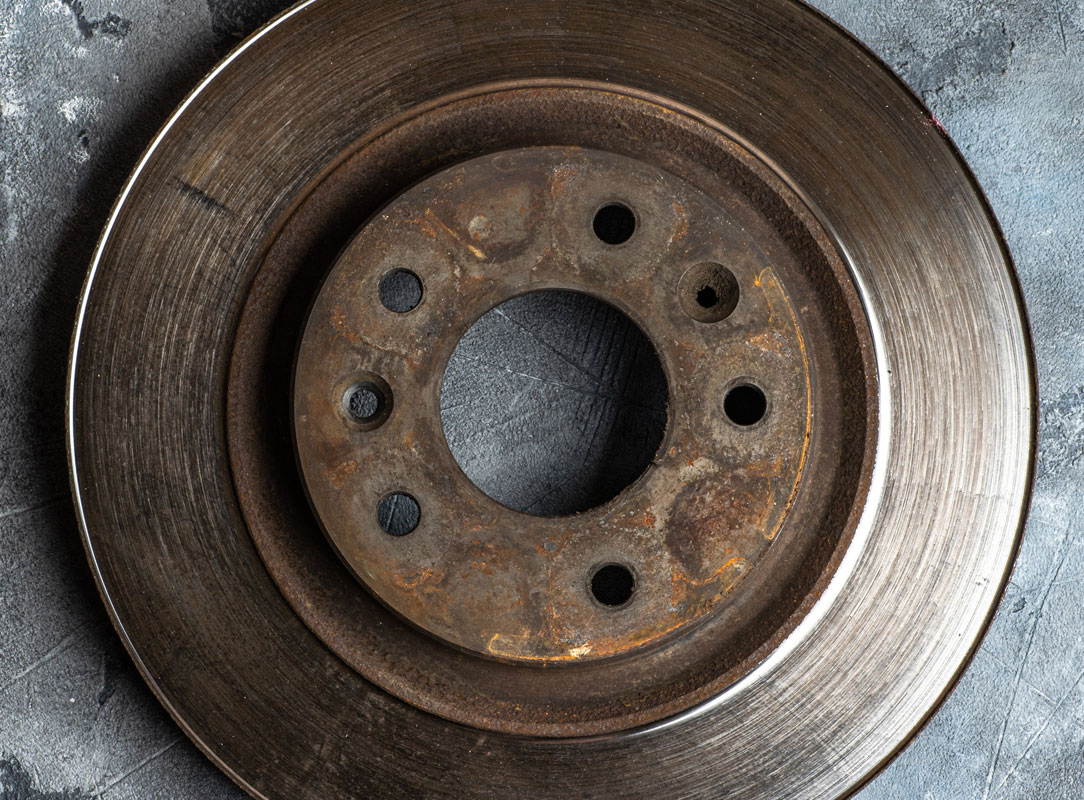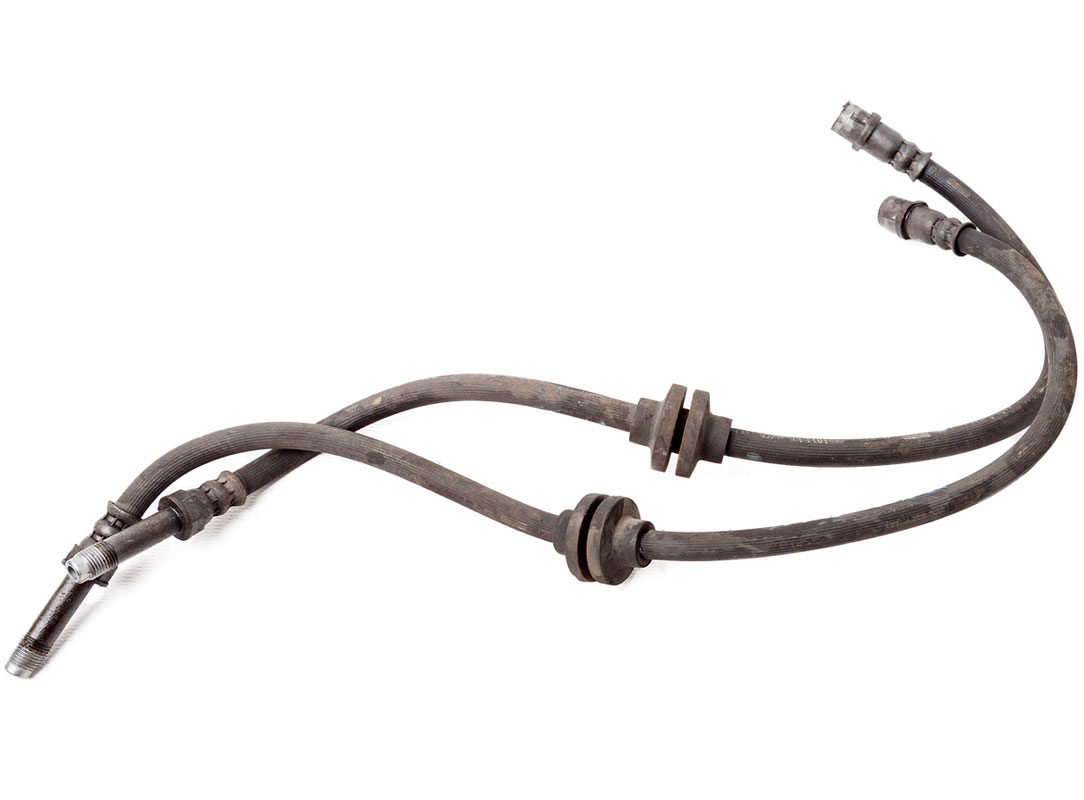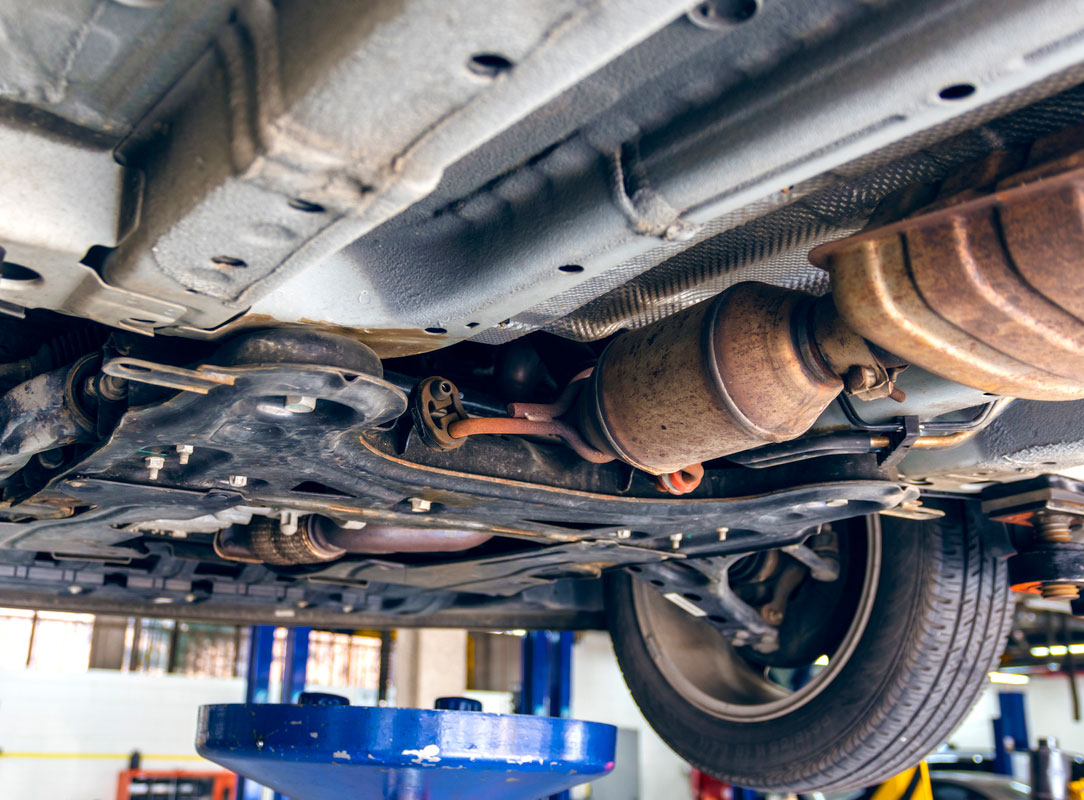
January 11, 2022
Welcome to January, where much of the United States has begun to experience cold temperatures, snowstorms and icy roads. Depending on where your shop is located, you could be looking at another three months of cold, wet weather, bringing with it the usual wear-and-tear to customers’ vehicles.
You know the importance of always performing a detailed inspection on a customer’s brake pads and braking system, but during the cold winter months, there are some additional things to look out for that can help keep your customers safer as they drive in inclement conditions.

RUST & PITTING
Even though snow is white and fluffy, when your customer pulls their car into the garage, that snow begins to melt, resulting in lots of water covering the brake pads and brake rotors.
After weeks of driving through the snow, that water on the brake pads and system components will create an environment for rust to form, and road salts can accelerate this process.
Some degree of surface rust is normal, but when that rust becomes excessive – especially on brake rotors – it can result in a problem called pitting. This is when the rust wears away at the surface of the brake rotors, causing them to become rough and uneven. This rust can then transfer to the brake pads, creating additional problems and unsafe braking.
If a customer is complaining of unusual noises when the brakes are applied, reduced stopping power or even brake pads freezing to the rotors, this can indicate that the braking system has been adversely affected by water and requires your attention.

APPLICATION OF EXCESSIVE FORCE (HEAT DAMAGE)
Snow and water on the brake pads can impact the way a vehicle responds to force from the brake pedal. This can encourage drivers to apply more force than usual to the brake pedal, leading to excessive heat buildup within the braking system.
Overheated brake pads will not perform as intended, and will wear more quickly when this excessive braking force is regularly applied.
You should look for signs that the brake pads and brake rotors may be under stress from excessive braking or experiencing heat damage, like extreme wear, squealing sounds, brake fade or a burning smell, during your inspection.

WEAK FLUID LINES
Water is the number one enemy of the vehicle’s fluid lines. When vehicles are driven repeatedly in cold, wet conditions, this can compromise the integrity of the rubber hoses and metal lines of the braking system.
When the water on the outside of damaged fluid lines begins to seep inside, it can freeze, causing major issues. Brake fluid is tough, with most brands able to withstand temperatures of -40° F without freezing, but that changes when the lines become damaged and water is introduced to the system.
Inspecting a vehicle’s fluid lines for signs of weakness is just as important as looking at the health of brake pads, brake rotors and calipers. Watch out for obvious visual leaks, a soft brake pedal or brake grab.

UNDERCARRIAGE CORROSION
You know the importance of keeping a vehicle clean, even when it may seem pointless to do so during the cold, messy winter months. Road salt and ice buildup can leave customers with vehicle issues that last long after the weather begins to warm up and the snow melts.
When a customer’s vehicle is up on the hoist, be sure to check its underside for any signs of premature corrosion, like rust.
This corrosion can negatively impact the brake pads, emergency brake, exhaust system and braking power, so even during a brake inspection, visual examination of the vehicle’s undercarriage should be part of your process.
With these four tips in mind, you should be prepared to give the best service possible to customers who come into the shop during these cold, winter months. By always performing thorough inspections and knowing what to look out for when the temperatures dip, you help ensure optimal safety and performance of the customer’s vehicle and its braking system.
